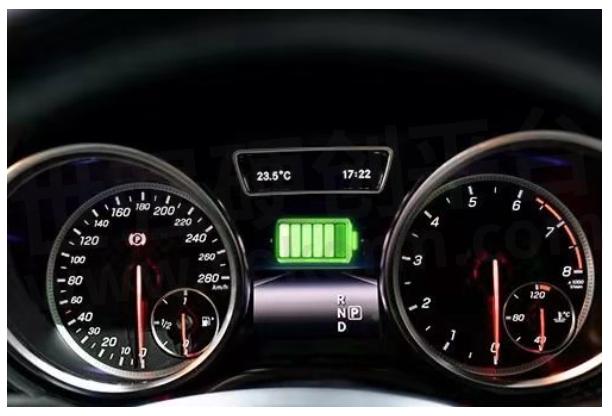How Does The Power Battery Packs of Electric Vehicle Survive The Summer?

Electric vehicles are becoming more and more popular among the public, and their core power batteries need to be resistant to high temperatures, water, and frost. If the electric car does not work, the first time we should consider is the "core" (battery) problem, so in the hot summer, how to deal with the high temperature?
How to dissipate the heat of the electric car battery?
The operating current of the power battery generates a large amount of heat; and the battery pack under a relatively closed environment, will lead to the battery temperature rise. In addition, the outdoor temperature is usually 35+° C. The battery itself generates a large amount of heat. These conditions cause battery heat dissipation to become a particularly important problem.
Different heat transfer materials will lead to different effects of heat dissipation, and there exist advantages and disadvantages of both air and liquid cooling.
The main advantages of using gas (air) as a heat transfer medium are simple structure, lightweight, effective ventilation when harmful gases are generated, and low cost.
The disadvantage is that the thermal conductivity is small with the battery surface, the cooling rate is slow, and the efficiency is low.
Currently, it's used in many applications.
The main advantages of using liquids as heat transfer media are: The thermal conductivity is high with the surface of the battery, and the cooling rate is fast;
The disadvantages are: high sealing requirements, relatively large weight, complicated repair and maintenance, and the structure is complicated: need for water jackets, heat exchangers, and relative components.
Introduction of heat dissipation method of air cooling structure for power battery pack.
1: Install a cooling fan on one end of the battery pack, and leave a venting hole at the other end to accumulate the airflow between the gaps of the battery core, taking away the high heat generated when the battery is working;
2: A thermal pad is added on the top and bottom of the electrode ends to allow the heat (which is not easily radiated from the ends of the battery pack) to be radiated to the metal casing through the thermal pad, at the same time, the high electrical insulation and puncture resistance of the silicone sheet have a good protection for the battery pack.
Introduction of heat dissipation method of liquid cooling structure for power battery pack.
1: The heat of the battery core is transferred to the liquid-cooled tube through the thermal pad, taking away the heat by cooling liquid through thermal expansion and contraction and free circulation, so that the temperature of the entire battery pack is unifid, and the coolant has a stronger specific heat capacity to absorb the battery when working, making the entire battery pack operate at a safe temperature.
2: The thermal silicone pad has good insulation performance and high resilience toughness, can effectively avoid vibration and friction damage between the batteries, and the short circuit hidden danger between the batteries, and is the best auxiliary material for the water cooling scheme.

Fig.1
Introduction of natural convection cooling method for power battery pack.
This kind of battery pack has a large space and good contact with air. The exposed part can naturally exchange heat through the air. The bottom part(which can not radiate heat naturally) can dissipate heat through the heat sink. The heat conductive pad fills the gap between the heat sink and the battery pack for heat conduction, shock absorption, and insulation.

Fig.2
Power battery pack heating sheet working method.
The heating sheet solution is mostly applied to the northern new energy automobile market. The heat of the battery preheating heating sheet before the start is transferred to the battery pack through the thermal conductive pad. The preheating battery and the UTP series thermal silicone pad have excellent thermal conductivity and insulation and wear resistance performance, effective heat transfer, protection of friction caused by friction between the battery pack and the heating sheet, short circuits, and so on.
Since the thermal pad plays an important role in the car battery, the silica pad with excellent performance is more helpful in exerting battery performance and prolonging the service life.
Which thermal silica sheet is suitable for the battery of the electric vehicle?
WT5912-H25 series
Waermtimo develops TIM's new high-strength thermal pad with thermal conductivity of 2.1~2.8w, temperature range of -50~200°C, elongation rate >300%, high toughness, heat shock, and effective shock absorption. It can be reworked many times, and it can be tightly integrated to form an irregular or complex surface. It has excellent interface filling and can be used repeatedly. Suitable for power equipment, automotive electronics, etc.
WT 5902-D45 series
This type of thermal pad can solve the problem of product structure design tolerance change and can be reused. It is a good vertical heat conduction material between the heat source and the heat sink. It has good insulation and mechanical properties, can be tightly integrated with irregular or complex surfaces, is easy to use and easy to remove, and is widely used in power equipment, automotive electronics, and so on.
- +1 Like
- Add to Favorites
Recommend
- Thermal Pad WT5912-H20,WT5912-H25 Provides a Heat Dissipation Solution for Wireless Charger
- Waermtimo WT5912 and WT5902 Series Thermal Pads Tightly Integrate Irregular or Complex Surfaces, Suitable for Wireless Routers
- Waermtimo’s New WT5912 Series Thermal Pad with High Mechanical Strength and Elongation Rate over 300% Can be Used for iPadPro Heat Dissipation
- Waermtimo Provides Professional Thermal Conductivity Solutions to 5G Device Heat Dissipation
- Waermtimo High-Strength Thermal Pads Help PCB Conduct Heat Effectively
- Reusable Waermtimo Thermal Pads and Thermal Gel without Solvents Are Excellent Solutions to SmartWatch Heat Dissipation
- Waermtimo’s High-Strength Thermal Pads Help LED Projectors Dissipate Heat More Effectively
- Why Thermal Gel Become More and More Popular?
This document is provided by Sekorm Platform for VIP exclusive service. The copyright is owned by Sekorm. Without authorization, any medias, websites or individual are not allowed to reprint. When authorizing the reprint, the link of www.sekorm.com must be indicated.





























































































































































































































































































































































































































































































































































































































































































































































































































































































